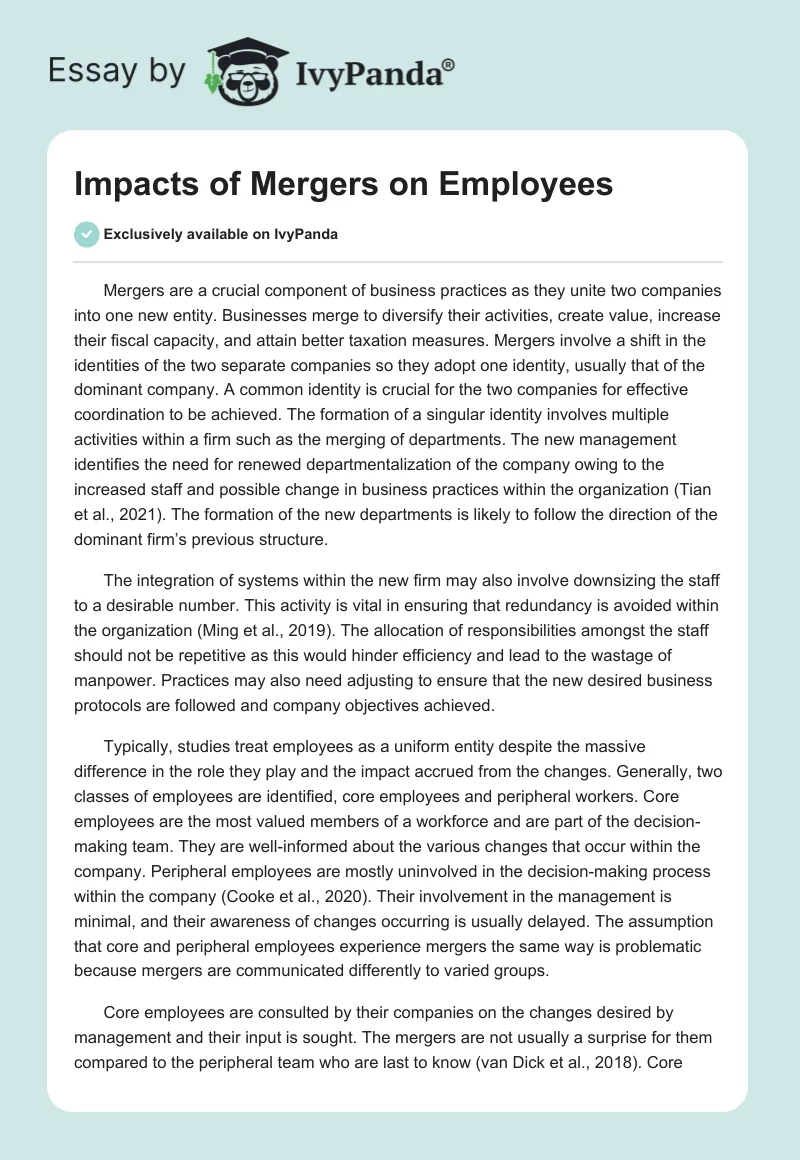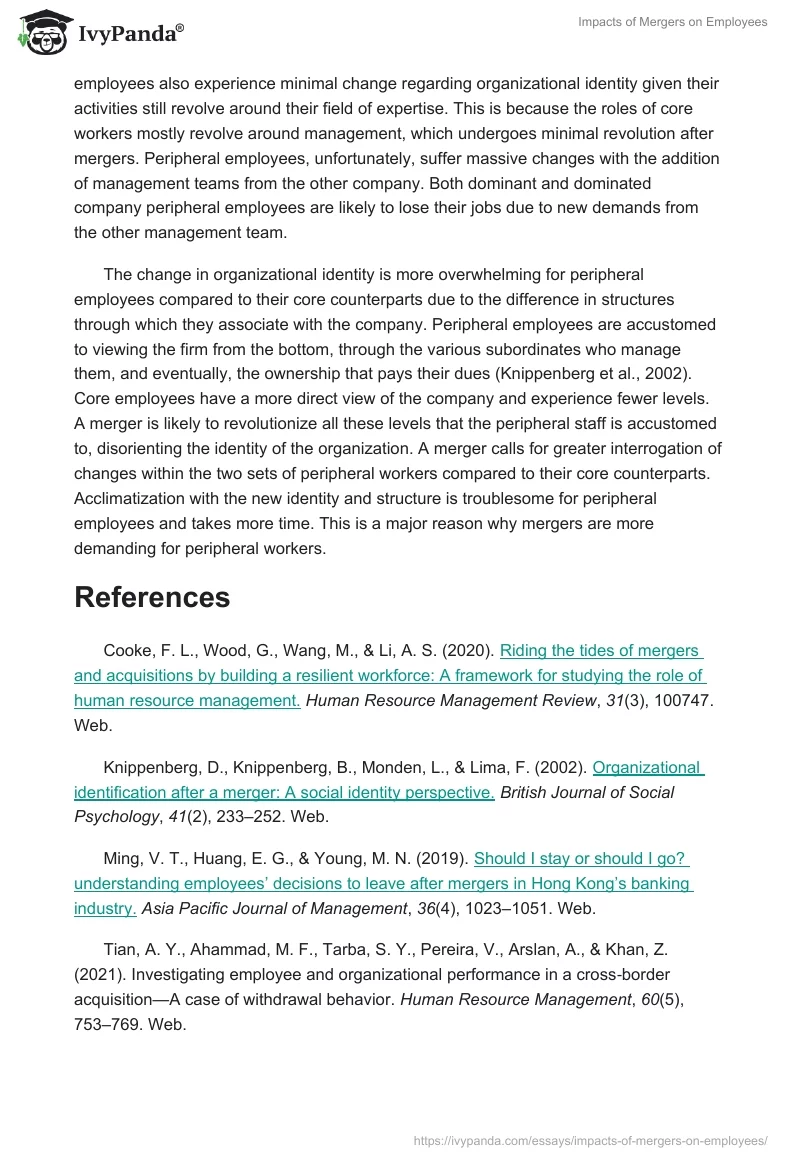Mergers are a crucial component of business practices as they unite two companies into one new entity. Businesses merge to diversify their activities, create value, increase their fiscal capacity, and attain better taxation measures. Mergers involve a shift in the identities of the two separate companies so they adopt one identity, usually that of the dominant company. A common identity is crucial for the two companies for effective coordination to be achieved. The formation of a singular identity involves multiple activities within a firm such as the merging of departments. The new management identifies the need for renewed departmentalization of the company owing to the increased staff and possible change in business practices within the organization (Tian et al., 2021). The formation of the new departments is likely to follow the direction of the dominant firm’s previous structure.
The integration of systems within the new firm may also involve downsizing the staff to a desirable number. This activity is vital in ensuring that redundancy is avoided within the organization (Ming et al., 2019). The allocation of responsibilities amongst the staff should not be repetitive as this would hinder efficiency and lead to the wastage of manpower. Practices may also need adjusting to ensure that the new desired business protocols are followed and company objectives achieved.
Typically, studies treat employees as a uniform entity despite the massive difference in the role they play and the impact accrued from the changes. Generally, two classes of employees are identified, core employees and peripheral workers. Core employees are the most valued members of a workforce and are part of the decision-making team. They are well-informed about the various changes that occur within the company. Peripheral employees are mostly uninvolved in the decision-making process within the company (Cooke et al., 2020). Their involvement in the management is minimal, and their awareness of changes occurring is usually delayed. The assumption that core and peripheral employees experience mergers the same way is problematic because mergers are communicated differently to varied groups.
Core employees are consulted by their companies on the changes desired by management and their input is sought. The mergers are not usually a surprise for them compared to the peripheral team who are last to know (van Dick et al., 2018). Core employees also experience minimal change regarding organizational identity given their activities still revolve around their field of expertise. This is because the roles of core workers mostly revolve around management, which undergoes minimal revolution after mergers. Peripheral employees, unfortunately, suffer massive changes with the addition of management teams from the other company. Both dominant and dominated company peripheral employees are likely to lose their jobs due to new demands from the other management team.
The change in organizational identity is more overwhelming for peripheral employees compared to their core counterparts due to the difference in structures through which they associate with the company. Peripheral employees are accustomed to viewing the firm from the bottom, through the various subordinates who manage them, and eventually, the ownership that pays their dues (Knippenberg et al., 2002). Core employees have a more direct view of the company and experience fewer levels. A merger is likely to revolutionize all these levels that the peripheral staff is accustomed to, disorienting the identity of the organization. A merger calls for greater interrogation of changes within the two sets of peripheral workers compared to their core counterparts. Acclimatization with the new identity and structure is troublesome for peripheral employees and takes more time. This is a major reason why mergers are more demanding for peripheral workers.
References
Cooke, F. L., Wood, G., Wang, M., & Li, A. S. (2020). Riding the tides of mergers and acquisitions by building a resilient workforce: A framework for studying the role of human resource management.Human Resource Management Review, 31(3), 100747. Web.
Knippenberg, D., Knippenberg, B., Monden, L., & Lima, F. (2002). Organizational identification after a merger: A social identity perspective.British Journal of Social Psychology, 41(2), 233–252. Web.
Ming, V. T., Huang, E. G., & Young, M. N. (2019). Should I stay or should I go? understanding employees’ decisions to leave after mergers in Hong Kong’s banking industry.Asia Pacific Journal of Management, 36(4), 1023–1051. Web.
Tian, A. Y., Ahammad, M. F., Tarba, S. Y., Pereira, V., Arslan, A., & Khan, Z. (2021). Investigating employee and organizational performance in a cross‐border acquisition—A case of withdrawal behavior. Human Resource Management, 60(5), 753–769. Web.
van Dick, R., Ciampa, V., & Liang, S. (2018). Shared identity in organizational stress and change.Current Opinion in Psychology, 23, 20–25. Web.


